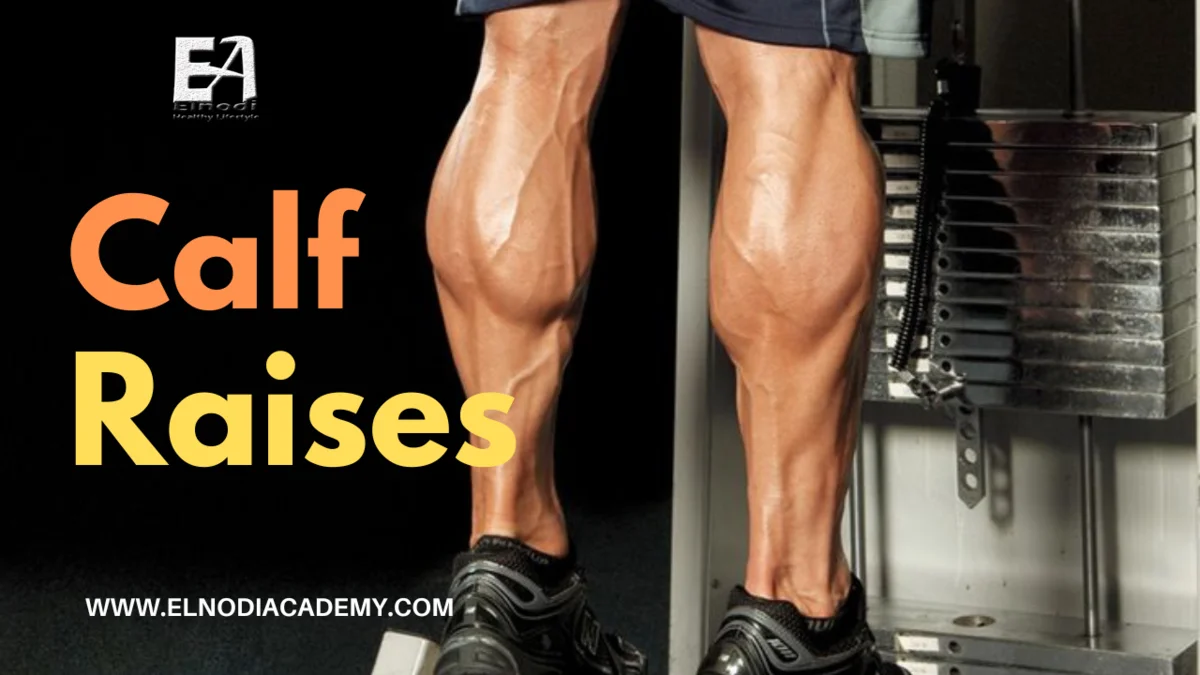Calf raises are one of the best exercises for toning and strengthening your calves. They work both the quadriceps and calf muscles, which makes them an ideal muscle-building program. Additionally, calf raises have been shown to improve blood flow and flexibility in these muscles.
What Are Calf Raises?
Calf raises, also known as standing calf raises, are bodyweight exercises that work the muscles in your lower legs. Standing tall with your feet hip-width apart, perform calf lifts. As you stand on your tiptoes, lift your body by pressing into the fronts of your feet and working your calf muscles. Return to your starting position and resume the movement pattern. Although calf raise exercises do not require any equipment, you can increase the difficulty by gripping a kettlebell or a pair of dumbbells throughout the activity.
Calf Raises benefits
1. Calf raises can help you build larger calf muscles. It works the muscles on the back of your lower legs, specifically the gastrocnemius muscle and the soleus muscle near your Achilles tendon. (1)
2. Calf raises can promote ankle stability and mobility. With practice, calf raises can help you build strong calf muscles, which protect your ankles. (2)
3. Calf raises can increase explosive power. It can increase your performance during explosive activities like running and jumping by strengthening the muscles responsible for knee flexion and plantar flexion in your feet. (3)
The calf Raises muscles worked
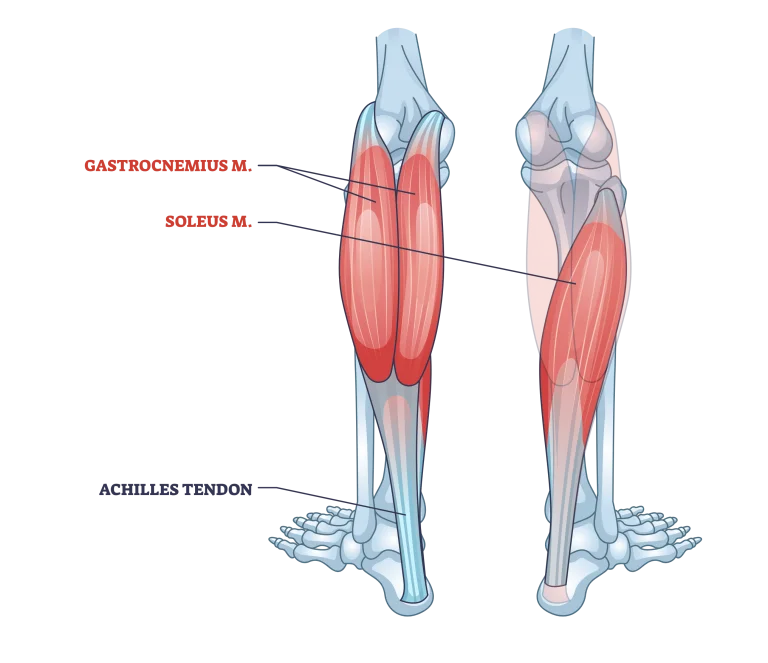
Seated Calf Raises form
How to do Seated Calf Raises correctly
The beauty of the seated calf raise, as previously said, is its simplicity. It’s a simple exercise that allows you to begin exercising your calves right away. However, there are key guidelines to remember and pitfalls to avoid when performing calf workouts. So, first and foremost, let’s look at how to achieve it.
Instructions
- Sit on the machine and place the balls of your feet on the platform, toes pointing forward – your heels will naturally hang off. Place the base of your quads behind the knee pad and your hands on top.
- Release the safety bar by extending your ankles.
- Dorsiflex the ankles and lower the heels until the calves are fully stretched.
- Exhale as you flex the calves and extend the ankles.
- Repeat for the specified number of times.
Tips
- Keep the repetitions slow and controlled. Limit momentum and pause at the top to emphasize the contraction.
- If you feel any form of stretch through the bottom of your foot throughout the workout, reduce the depth of the heels.
- Try to move through the ball of the foot rather than the base of the toes.
Mistakes to avoid
Raising the Shins
The shins should stay relatively motionless during the exercise, with the ankle and foot being the primary source of dynamic motion. The entire exercise should ideally be completed with the ball of the foot entirely motionless. (4)
Movement of the shin, whether by rolling it in a certain direction or “helping” the weight up by extending the knee forward, can shift much of the training stimulus away from the calves and towards the quads.
If the lifter is moving their shin so as to move their foot or otherwise shorten the range of motion, it is possible that they possess poor ankle mobility, or that they could be attempting to perform the exercise with too much weight for their calf muscles alone to handle.
The addition of ankle and foot mobility work is the greatest answer in the former scenario. In the latter case, lowering the weight and concentrating on moderate, high-quality repetitions is the best option.
Using Excessive Weight
Though it may appear clear, executing sitting calf raises with too much weight can quickly lead to a breakdown in form and the development of problems.
If the lifter attempts to calf raise more than they are capable of, it is possible to tear the numerous tendons of the ankles and feet – a potentially life-altering peril that should be avoided at all costs.
The seated calf raise should be performed with only a moderate amount of weight at most, ideally an amount that allows for at least eight consecutive repetitions performed with correct form.
Calf muscles are clinically proven to respond significantly better to high-volume sets than to considerable quantities of weight, and as a result, lifters will discover that avoiding lifting too much weight will not only help them prevent injuries but will also speed up the development of their calves.
Performing Repetitions Too Quickly
Just as using too much weight can put the lifter at risk of injury, so too can rushing through repetitions affect the quality of their training.
Time under tension is a well-established notion in resistance training that states that when muscles are flexed against resistance for an extended amount of time, they will eventually undergo hypertrophy in a way that a shorter period will not.
Keeping this in mind, we can see how performing seated calf raises too quickly can sabotage a lifter’s development. For the best possible results from the exercise, each repetition should be performed in a slow and controlled manner.
Sets And Reps For Calf Raise
It can be performed in a variety of sets and reps, depending on your fitness level, goals, and workout intensity. I’d want to offer some general guidelines.
Beginner
- Sets: Start with 2-3 sets.
- Reps: Aim for 10-15 reps per set.
intermediate
- Sets: Increase to 3-4 sets.
- Reps: Aim for 12-20 reps per set.
Advanced
- Sets: Perform 4-5 sets.
- Reps: Aim for 15-20 reps per set.
Calf Raises Variations
Leg Press Calf Raise
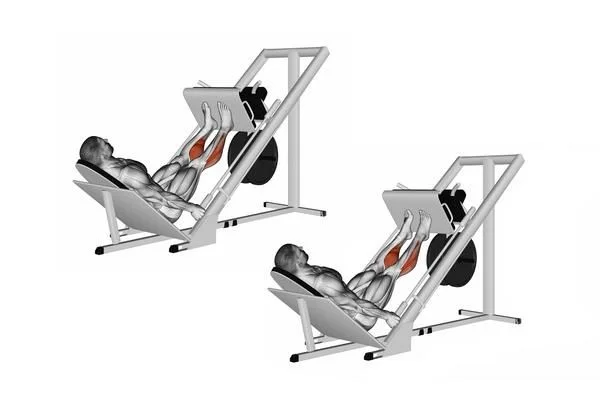
Lifters can substitute the leg presses and calf raises for the sitting ankle rise for a more machine-based training stimulus.
The exercise is equivalent to the sitting calf raise in terms of the range of motion and muscle engagement, while the leg press calf raise may be more beneficial for gaining mass in the gastrocnemius.
By substituting the leg press calf raise, you will get more time under stress as well as a lower chance of injury due to the leg pressing machine’s advantages.
Calf Raise Machine

Another possible alternative to the seated calf raise is a specialized resistance machine known as a calf raise machine.
It is performed in a standing position with a self-stabilizing and vertical angle of resistance, which changes the focus of the exercise and results in a slightly altered movement pattern.
The main advantage of replacing the sitting calf raise with the calf raise machine is its increased capacity for volume and range of motion, both of which may be done to a greater extent due to the machine’s features.
Standing Calf Raises
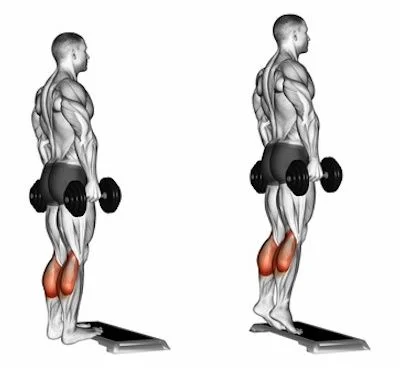
For lifters wishing to place greater focus on their gastrocnemius, the standing calf raise is the ideal substitute for the seated calf raise.
While it does not have the same level of soleus recruitment, the standing calf raise compensates by allowing for greater bulk and definition in the calves, making it the preferable exercise for bodybuilders or those concerned with the appearance of their calves.
calf raises Smith machine
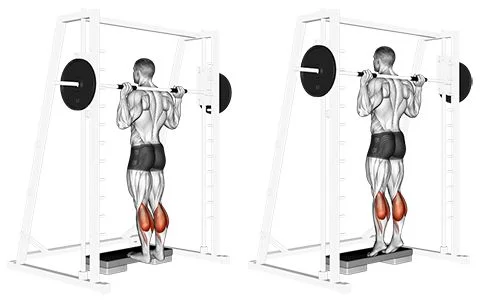
Calf raises on a Smith machine are an excellent technique to develop your calf muscles, which can improve athletic performance, reduce injury risk, and make your legs appear toned. If you are new to calf raises or have balance concerns, the Smith machine can provide stability and support.
calf raises hack machine

Calf raises on a hack machine are an excellent technique to develop your calf muscles, which can improve athletic performance, lower your chance of injury, and make your legs appear toned. If you are new to calf rises or have balance concerns, the hack machine can provide stability and assistance.
Calf Raises Alternatives
Jump rope: Jumping rope is an excellent technique to get cardio exercise while also strengthening your calves. Simply stand with your feet shoulder-width apart and both hands on the jump rope. Swing the rope behind you, then jump over it, landing on your toes. As you land, lift your heels off the ground, then drop them and swing the rope again. Continue to jump as long as you can.
Single-leg standing calf raises: Stand on one leg with your arms at your sides to perform a single-leg standing calf raise. Stand on your tiptoes and lift your heel off the ground. Hold for a second before slowly lowering your heel. Repeat 10-12 times more, then switch legs.
Squat hold calf raises: Begin in a squat position with your feet shoulder-width apart and your toes pointing slightly outward to perform a squat hold calf raise. Maintain a straight back and an engaged core. Stand on your tiptoes and lift your heels off the ground. Hold for a second before slowly lowering your heels. Repeat 10-12 times more.
Leg press calf raise: Sit in a leg press machine with your feet shoulder-width apart and your toes pointing slightly outward to perform a leg press calf raise. Lower the weight until your knees are 90 degrees bent. Then, step off the platform and stand on your tiptoes. Hold for a second before slowly lowering your heels. Repeat 10-12 times more.
Summary
To get the most benefits from seated calf raises, do 2-3 sets of 8-15 repetitions each, and make sure the calves are pushed through their whole range of motion in a calm and controlled way.
The seated calf raise is a solid exercise in nearly all aspects of the term, but it is limited by how it is performed.
Remember, one good repeat is worth ten bad repetitions, and appropriate form should be used as much as possible.
FAQs
how long should you hold calf raises?
Do calf raises help the glutes?
What are calf raises good for?
how to do a calf raise properly?
References
- Cox, E. A. (2022, December). Preweaned dairy calf nutrition: Veterinarian’s role in a milk feeding program. In American Association of Bovine Practitioners Conference Proceedings (pp. 100-104).
- Hébert-Losier, K., Ngawhika, T. M., Gill, N., & Balsalobre-Fernandez, C. (2022). Validity, reliability, and normative data on calf muscle function in rugby union players from the Calf Raise application. Sports Biomechanics, 1-22.
- Ewertowska, P., Świtała, K., Grzyb, W., Urbański, R., Aschenbrenner, P., & Krzysztofik, M. (2023). Effects of whole-body vibration warm-up on subsequent jumping and running performance. Scientific Reports, 13(1), 7411.
- Green, B., McClelland, J. A., Semciw, A. I., Schache, A. G., McCall, A., & Pizzari, T. (2022). The Assessment, Management, and Prevention of Calf Muscle Strain Injuries: A Qualitative Study of the Practices and Perspectives of 20 Expert Sports Clinicians. Sports medicine-open, 8(1), 1-28.


